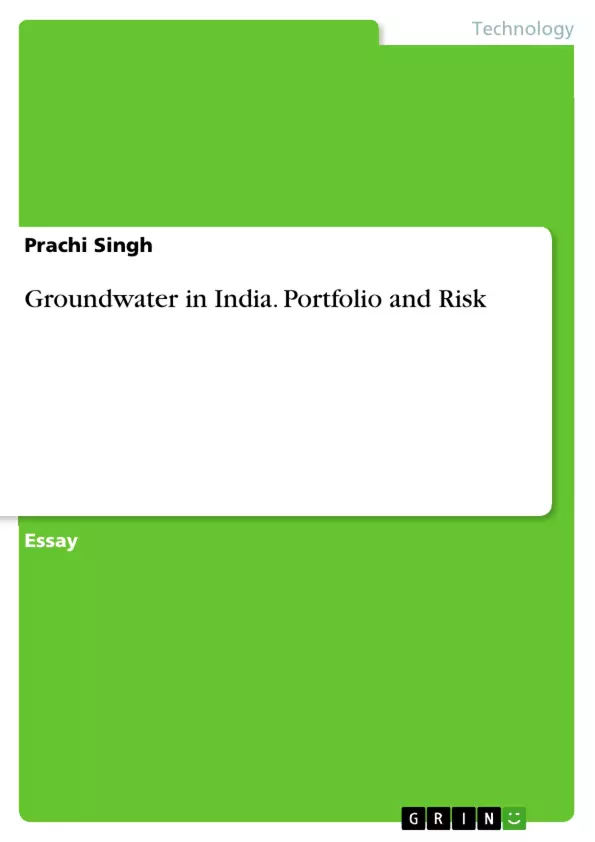Groundwater is the water that seeps through rocks and soil and is stored below the ground. The rocks in which Groundwater is stored are called aquifers. Aquifers are typically made up of gravel, sand, sandstone or limestone. Water moves through these rocks because they have large connected spaces that make them permeable. The area where water fills the aquifer is called the saturated zone. The depth from the surface at which Groundwater is found is called the water table. The water table can be as shallow as a foot below the ground or it can be a few hundred meters deep. Heavy rains can cause the water table to rise and conversely, continuous extraction of Groundwater can cause the level to fall.
Inhaltsverzeichnis (Table of Contents)
- BACKGROUND
- GROUNDWATER AVAILABILITY
- GROUNDWATER ABSTRACTION AND CONSUMPTION
- GROUNDWATER QUALITY AND STATUS
Zielsetzung und Themenschwerpunkte (Objectives and Key Themes)
This text provides an overview of the current state of groundwater resources in India, focusing on its importance for drinking water, food security, and overall societal needs. It investigates the challenges posed by groundwater overuse, contamination, and the impact on water quality and availability.
- Groundwater's critical role in India's water security
- The impact of increasing groundwater extraction on availability and quality
- Factors contributing to groundwater overexploitation and contamination
- The extent of groundwater stress and its geographical distribution
- The significance of groundwater quality and the consequences of contamination
Zusammenfassung der Kapitel (Chapter Summaries)
- BACKGROUND: Introduces the concept of groundwater, its importance for human needs, and the unique situation of India's reliance on this resource. It highlights the increasing pressure on groundwater due to population growth, urbanization, and industrialization.
- GROUNDWATER AVAILABILITY: Discusses the available water resources in India, including surface water and groundwater. It analyzes the factors impacting usable water resources and presents statistics related to groundwater availability and its distribution across the country.
- GROUNDWATER ABSTRACTION AND CONSUMPTION: Explores the pattern of groundwater extraction and its use in various sectors, primarily agriculture and drinking water. It examines the issue of groundwater overexploitation and its consequences on water levels, well yields, and overall groundwater quality.
- GROUNDWATER QUALITY AND STATUS: Addresses the critical concern of groundwater contamination due to industrial activities, agricultural practices, and other pollution sources. It analyzes the impact of different contaminants on human health and highlights the alarming levels of contamination across India.
Schlüsselwörter (Keywords)
The text primarily focuses on groundwater resources, their availability and management in India. Key concepts include: groundwater extraction, overexploitation, contamination, water quality, water security, agriculture, drinking water, industrial use, and societal needs. The text also incorporates statistical data and geographical distribution of groundwater resources, stressing areas, and contaminated districts.
- Quote paper
- Prachi Singh (Author), 2018, Groundwater in India. Portfolio and Risk, Munich, GRIN Verlag, https://www.hausarbeiten.de/document/448554


